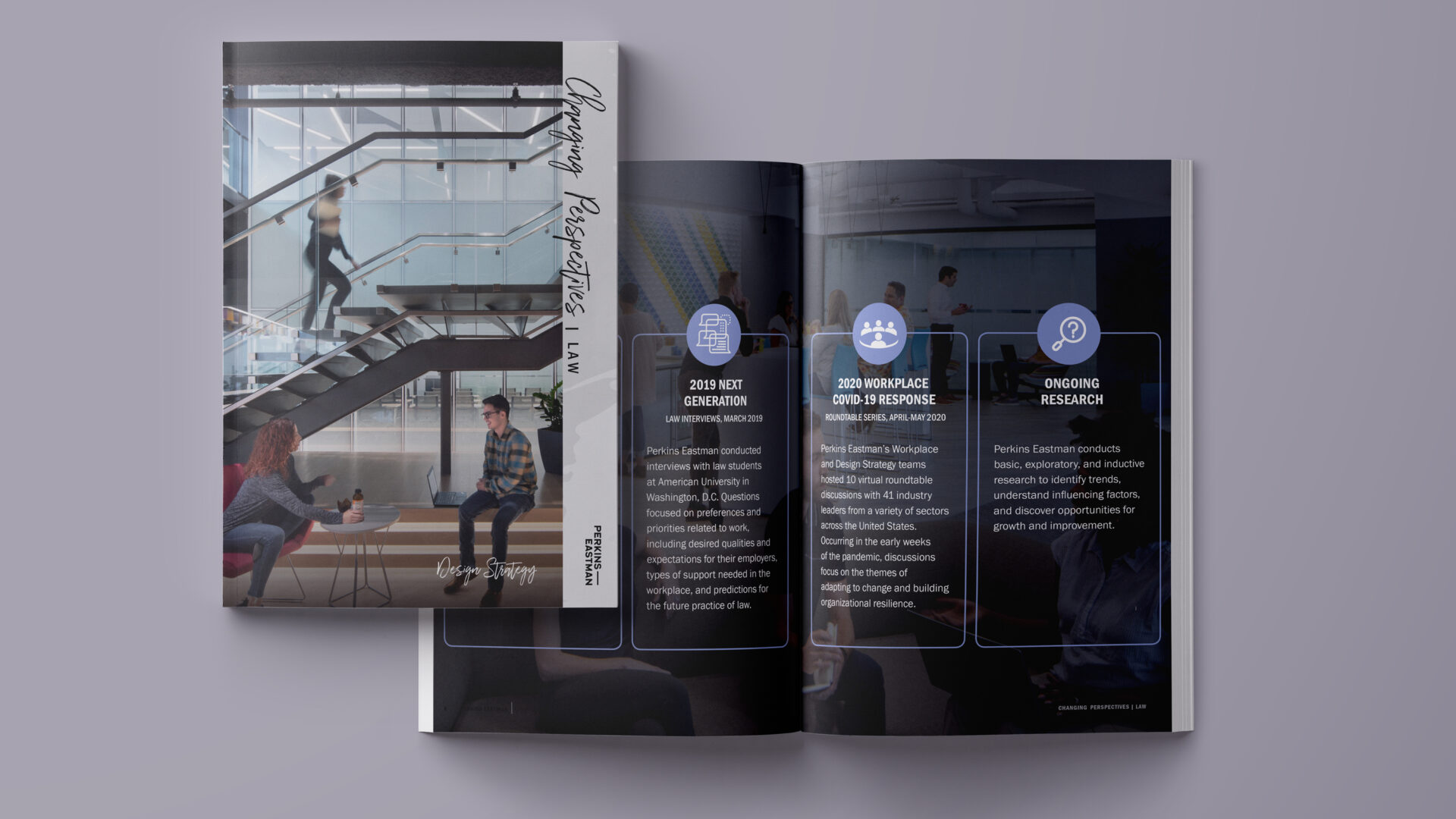
Changing Perspectives | Law, a white paper recently published by the Perkins Eastman Design Strategy Group.

Changing Perspectives | Law, a white paper recently published by the Perkins Eastman Design Strategy Group.
When we took up our “Changing Perspectives” Initiative, we set out to answer a question on many of our minds: How will work work in a post-pandemic world? During roundtables with leading law firms, we found a resistance to recent trends calling for a fully remote post-pandemic workforce: “I am personally opposed to going fully remote for any employee. How are young associates going to rise through the ranks without day-to-day interactions with partners and clients?” Many up-and-coming lawyers echoed this concern. In interviews at American University, law graduates were asking employers, “What is the firm culture like? How well do people get along with each other? How much time do they spend together?”
From top down, lawyers are yearning for in-person mentorship and collaboration. But what they’re calling for is not a complete return to pre-pandemic work/life. Even before the pandemic, the law office was notoriously inefficient with space allocation, consuming nearly twice as much square footage per seat compared to other industries. Private offices that hogged essential views were emblematic of a hierarchical workplace on the decline. In its place, a desire for single-sized offices and hoteling solutions has arisen among the next generation of attorneys who are rising through firm ranks, a trend that promotes a more equitable—and cost-effective—workplace culture. The pandemic seemed to accelerate these desires, with one roundtable participant estimating a 25-percent reduction in the real-estate footprint of law offices going forward.
This research, compiled in our “Changing Perspectives: Law” report, found that the law office of the future is shrinking and specializing, with a focus on increasing recruitment, mentorship, culture, and reputation. In the middle of the lockdown, when companies were adapting to a remote work infrastructure, Perkins Eastman was thinking ahead. We were already helping law firms meet the needs of its evolving workforce in an increasingly digitized economy.
For clients like McCarter & English, LLP, we redesigned their D.C. office to increase work-points of collaboration:

Copyright Andrew Rugge/ Courtesy Perkins Eastman
Casual areas like the library, above, that support impromptu encounters are distributed throughout the workplace with meeting “enclaves” designed to support both collaboration and heads-down work.
For Davis, Wright, Tremaine, LLP, we consolidated the real-estate footprint of their D.C. office into a network of single-sized office spaces, leaving more room for spaces that encourage connection and collaboration.

Copyright Andrew Rugge/ Courtesy Perkins Eastman
In their entry, above, a life-sized interactive pegboard wall with movable hanging shapes and letters provides a means to step away from a computer and interact with colleagues. Similar to the cognitive benefits of doodling, this board can be used to create myriad patterns and enables attorneys and staff to play games that facilitate free-thinking during informal, casual breakouts or phone calls.
These law firms are already adapting to the desires of a post-pandemic workforce. Their initiatives will likely retain talent and increase recruitment of young attorneys yearning for an office that speaks to their needs. If you want to see more of their design solutions, or are curious about how to leverage your own office for a post-pandemic workforce, we invite you to download our report. It marks the first installment of our Changing Perspectives series, which will also cover Finance, Technology, Healthcare, Education, and more.